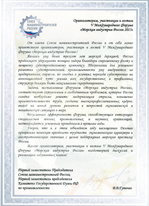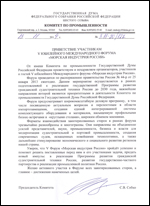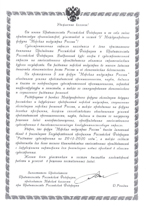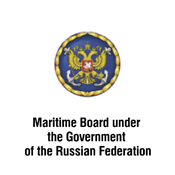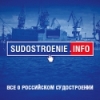“Marine Industry of Russia”
Exhibition Hall,
17-19 May 2016
Time left till opening of the Forum
May 07, 2015
Greetings from the Ministry of Industry and Trade of the Russian Federation
January 28, 2015
The Forum organizers received the greeting from Gutenev V.V., the First Deputy Chairman of the Russian Engineering Union.
January 15, 2015
The Government of the Russian Federation addressed a welcome letter to the V International Forum Marine Industry of Russia.
Marine Engines and Propulsion Systems – Brief Overview
Marine Engines and Propulsion Systems – Brief Overview
The diesel engine is the most popular type of the marine engine.
Traditionally, marine diesel engines are divided into low-speed (piston speed up to 7 m/s), medium-speed (7-10 m/s), and high-speed (over 10 m/s). Besides, they are divided into slow (up to 350 rpm), medium (350-750 rpm), and high running (over 750 rpm) engines. They can also be classified by fuel injection, blow-down type, etc.
Marine ships are equipped with the following engines:
- simple-acting engines with cross, loop, uniflow valve scavenging;
- engine with uniflow scavenging and diverging pistons;
- double acting diesel engines.
Since marine diesel engines are to ensure not only forward but even back run of propellers both directly and via reduction gearing, they differ in some auxiliary components from surface engines.
Development Prospects
Further modernization of ship engines is supposed to be made by new various solutions. Thus, two-stage boost allows reducing of engine mass-to-power ratio 1.4-1.5 times while effective cooling of cylinder head and boss will ensure optimum combustion space thermal environment. Application of long-stroke slow-running diesel engines with 22% piston upstroke allows significant decreasing of crank axle rate speed thus saving 5-8% of fuel. The deflation valve hydraulic actuating system and air damper will replace springs. Slow running engines will be retrofitted by enhancement of air-fuel mixing, fuel feed, and turbo-charging application.
Some improvement feasibilities of diesel-electric power plants for submarine fleet are under consideration. The first is related with application of high-running (1200-1800 rpm) engines with total aggregate capacity of 700-1500 kW as alternating current generators, upgrading of electric machine efficiency and capacity, refinement of traditional batteries and development of new ones. Works in the field of application of high temperature superconductors contribute to creation of efficient non-nuclear power plants in future.
The second improvement feasibility is related to application of anaerobic SPP: Stirling engines, direct conversion of chemical power to electricity without any interim steps, and enclosed diesel power plants.
Turbomotors
Propulsive systems equipped with gas or steam turbines excel with major moving force. The capacity of such system in tow can be higher than in lost motion. In addition, turbines feature in torque self-adjusting thus excluding the possibility of overload.
Gas turbines (GT) disadvantage mainly in low efficiency (about 30%), high fuel consumption, sensibility for assemblage and fuel preparation as well as impossibility of reversing; which is the reason of installation of additional turbine aboard GT ships. All of this retards introduction of turbines in the civil shipbuilding. However today in addition to navy ships, such PP are installed at megatankers, container carriers, aerostatic crafts, and hydrofoil vessels, that is at vessels requiring high capacity. Besides, turbines of many ships are used as boost installations (afterburning plants).
Propulsive Systems
Propulsion devices are designed to assure ship motion by conversion of some kind of energy. They can be active and reactive. Sails are active propulsion devices, others are reactive. Today, the following propulsion devices are in active usage:
- vane ones – pulling oar, paddle wheel, propeller screw, cycloidal propulsion unit;
- water-flow – thrust and water-jet motor.
Today, the most ancient propulsive devices are used at sport vessels and boats – the oar – and at sport cruisers and pleasure yachts – the sail, while the paddle-wheel is substituted by the propeller screw.
The propeller screw is the most popular of propulsion devices, and is referred to hydro-reactive ones. It consists of a hub with 2-6 blades equally spaced in a circumferential direction. By design, propeller screws can be:
- fixed pitch propellers (FPP), and
- adjustable pitch propellers (APP).
The propeller screw is used at various ships – from transport to submarines. Their disadvantage is need for increasing of screw dimension and weight in order to up-shift of impulse to the vessel. Speed increase entails cavitating which threatens with blade destruction or loss of screw efficiency. In the middle of the past century, the way out was offered – operation in supercavitation mode. The efficiency of special supercavitating screws is 15-20% higher than that of standard screws. Such screws can effectively operate at 3000 rpm, so they are used at direct-acting gearless “engine-propulsion device” systems.
The cycloidal propulsion unit is also hydro-reactive.
It is a flush-bilge disk with propeller-type blades.
The disk circles the vertical axis while blades move rotationally oscillatory.Such propulsion unit advantages in high maneuvering ability of the vessel. Two symmetrical cycloidal propulsion units allow changing speed and direction of movement up to and including full stop without reversal of the main ship power plant.
Their disadvantage is low efficiency, structural complexity, limited transmission capacity and inefficient operation in rocking conditions, frequent blade crash and general expensiveness. So such propulsion units are installed at highly-maneuverable ships (ferries, bibcocks, craft tugs). Cycloidal propulsion units are also used as auxiliary thrusting propellers at large sea-going vessels.
Water-jet propulsor. Water-jet propulsor consists of a pump or screw, shaft, water pipe (water-jet pipe), counter-propeller (outlet straightener), and reverse-steering arrangement. Water ejected via nozzle provides movement of the ship.
Since absence of extensions assures good ship manoueuvrability in shallow water areas, water-jet propulsors are suited to shallow-draft ships (river-going vessels, for example). Currently, water-jet propulsors for hydrofoil vessels tend to be applied. Thanks to application of modern steam and gas turbines, water-jet propulsors are used successfully at large vessels, and design propulsive efficiency of such unit can reach 83% which is 11% more than that of the propeller screw.
Submarine application trends for water-jet propulsors are especially interesting, since it could increase the speed and decrease noise emissions of such crafts. However, such grand problems as viscous losses due to stream-outside flow vortex generation, and enormous flow friction in resultant eddy currents exist. Besides, increase of the speed of the submarine will inevitably entail cavitation rise at the pump blades which leads to fail. Application of supercavitation impeller blades could solve the problem.
The aerial propeller as a ship propulsor is installed at airfoil boats, amphibians, and aerostatic crafts. The operating principle of the last devices is based on pressurization under the ship bottom. The air bubble thereby created lifts the vessel over any surface (water, sand or boggy ground). With the same principle, air bubble methods can be different – central circular nozzle, nozzle ring with or without extension, labyrinth seal around the periphery of the bottom, etc.
The New
The number of patents for new ship propulsors is very large. Thus, the water-jet propulsor was offered based on water heating. It consists of the contoured duct (water pipe) combined with the water heater. The water pipe is to be placed between hulls of the submarine. The sea inlet being located on the underside, the heated water is raised up via the free-flow duct and is ejected upper of the vessel contrarily to its direction. The water moves in the duct due to density difference. The main purpose of such propulsive unit is to provide noiseless movement of the submarine.
Well known propulsors working on the fishtail principle are also being retrofitted. Inventors state rather high (even comparing to propeller screws) efficiency and economy of such units. But they go behind on low speed of the experimental models.
One of the Russian inventors offers equipment with additional special shaped bow propeller. The model equipped with such propeller and with a standard stern propeller demonstrated decent velocity gain – about 50% of the reference.
© Marine Industry of Russia, 2009-2010. All rights reserved.
By: “Ideological buiseness-projects”
Design by Valentina Ivanova.
